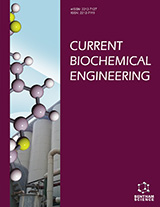Abstract
Background: It is a great challenge for scientists to overcome the barrier of Antibiotic resistance by imparting new technologies to form structurally unique and robust antibiotics in an economically scalable way. Rapamycin is a well-known macrolide with numerous applications in the medical field. It is one of the most effective and efficient immunosuppressant antibiotic available in recent history. With the increase of its application, decreasing its production cost stands as one of the most critical challenges. Therefore, the selection of a suitable and potent strain of higher yield has emerged to be of great necessity in the present scenario.
Methods: Spores prepared from lyophilised culture when treated with different exposure to UV light, showed a decrease in survival rates in comparison to the untreated sample. Combined treatment of spores with UV mutagenesis and chemical mutagen (NTG) was done. Spores were incubated at 30°C at 120 rpm for 2 hr, and some of them were found viable after the treatment. Agar-disc diffusion method, turbidimetric assay and HPLC analysis were carried out to study the rapamycin concentration by potent strain.
Results: Macrolide production was seen to be maximum on the 11th day of fermentation which is 1.76 folds higher as compared to wild type Streptomyces hygroscopicus in shake flask. Structural confirmation and conformation study were supported by the Nuclear Magnetic Resonance (NMR) technique.
Conclusion: The maximum amount of antibiotic produced was observed to be 284 mg/L.
Keywords: Rapamycin, combined mutational study, Streptomyces hygroscopicus, NMR, HPLC, antibiotic resistance.
Graphical Abstract
[http://dx.doi.org/10.7759/cureus.1403] [PMID: 28852600]
[http://dx.doi.org/10.4161/cc.10.7.15230] [PMID: 21389767]
[http://dx.doi.org/10.7164/antibiotics.28.721] [PMID: 1102508]
[http://dx.doi.org/10.1007/BF01569962] [PMID: 7612217]
[http://dx.doi.org/10.1016/S0032-9592(98)00108-3]
[http://dx.doi.org/10.1007/s11274-017-2260-3] [PMID: 28390015]
[http://dx.doi.org/10.1007/s13205-013-0189-2]
[http://dx.doi.org/10.1166/jbeb.2014.1105]
[http://dx.doi.org/10.1007/s11696-019-00767-0]
[http://dx.doi.org/10.1007/BF01573954] [PMID: 7662284]
[http://dx.doi.org/10.1038/sj.jim.2900434] [PMID: 9366089]
[http://dx.doi.org/10.1002/hlca.19930760106]
[http://dx.doi.org/10.1139/v80-090]
[http://dx.doi.org/10.1007/s10529-005-8463-y] [PMID: 16132865]
[http://dx.doi.org/10.1007/s10295-016-1880-1] [PMID: 27909940]
[http://dx.doi.org/10.1002/bit.27158] [PMID: 31478187]
 6
6

















